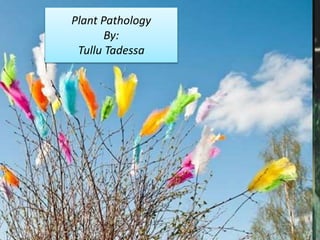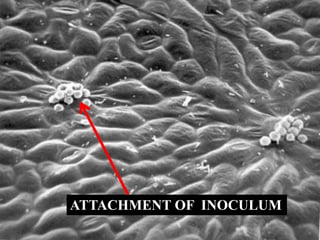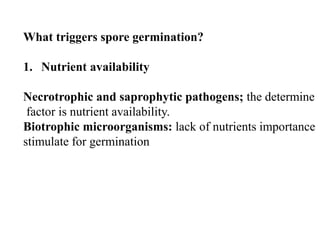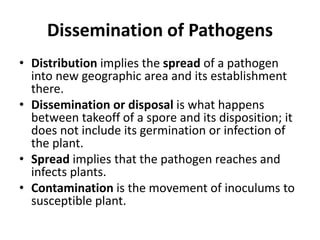Plant Pathology is the study of diseases that affect plants. It involves studying the causes, mechanisms, and control of plant diseases. The document discusses key topics in plant pathology including disease cycles, types of pathogens and inoculum, modes of dissemination, and the relationship between disease cycles and epidemics. It provides definitions and examples of important terminology used in plant pathology.


































































































